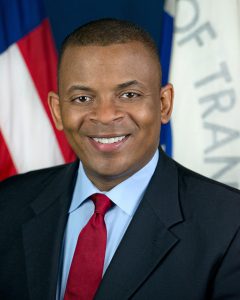How a Military Convoy a Century Ago Influenced Public Policies that Injured Cities

You can see the importance of public policies in the 100-year story of highway building in the U.S. and its impact on cities. In 1919 a young U.S. Army officer who had missed out on combat in World War I joined a military expedition leaving Washington, D.C. He rode across the country to San Francisco in a convoy of 81 military vehicles—cargo trucks and trailers, cars, motorcycles, and ambulances. The trip covered 3,250 miles and took 56 travel days, averaging about 60 miles a day—slowed by long stretches of unpaved, sandy, potholed roads, wooden bridges that broke down, accidents, and vehicles needing repair. The convoy encountered dirt roads in Illinois, the lieutenant colonel, Dwight D. Eisenhower, reported in a memo, “and practically no more pavement until reaching California.”
The convoy had been organized to show the country how motor vehicles could be used for military purposes and to promote the construction of transcontinental highways. In many of the 350 towns through which the army’s promotional convoy passed, hospitable residents offered barbecues, melon fests, and other celebrations. “The truck train was well received at all points along the route,” Eisenhower testified. “It seemed that there was a great deal of sentiment for the improving of highways and, from the standpoint of promoting this sentiment, the trip was an undoubted success."
A century ago, such promotion of motor vehicles was considered essential. The U.S. automotive industry was only about 30 years old and in 1901 it had produced a mere 3,219 cars. By 1916 production exceeded 1 million vehicles for the first time, but annual sales had declined for several years and the lack of suitable roads was a barrier to growth.
The 1919 convoy’s greatest impact came 37 years later when the lieutenant colonel along for the ride had become president of the United States. Eisenhower recalled his time-consuming transcontinental road trip and the efficient, four-lane highways of the German autobahn network that he’d encountered while commanding Allied forces in Europe during World War II. In 1956 he successfully pushed for the first huge federal investment, $25 billion, for a national Interstate Highway System. Some 60 years and $128 billion later, the completed system contains about 47,000 miles of interstate, including thousands of miles of heavily traveled highways inside cities.
Since the 1950s, the urban highways have been heavily criticized for several reasons, as historian Raymond Molh summarizes: “The interstates linked central cities with sprawling postwar suburbs, facilitating automobile commuting while undermining what was left of inner-city mass transit. Wide ribbons of concrete and asphalt stimulated new downtown physical development, but soon spurred the growth of suburban shopping malls, office parks, and residential subdivisions as well. At the same time, urban expressways tore through long-established inner-city residential communities in their drive toward the city cores, destroying low-income housing on a vast and unprecedented scale. Huge expressway interchanges, cloverleafs, and access ramps created enormous areas of dead and useless space in the central cities.” Before Eisenhower left the presidency, he expressed surprise that the system was penetrating into cities, rather than bypassing them as the German autobahns did. But, a history of the interstate’s origins notes, it was big city mayors and planners who had lobbied the Congress to make sure highways ran into cities, as extensions that would distribute urban traffic heading to and from the interstates. They wanted more big roads to help them manage the growing number of cars moving around in cities.
 In 2016 an unexpected source blamed this development for damaging cities: the head of the U.S. transportation department, which spends tens of billions of dollars a year on highways. Anthony Foxx called for policies to undo the damage caused by urban highways. Foxx recalls growing up in Charlotte, North Carolina in an African-American neighborhood walled in by highways. “Freeways were there to carry people through my neighborhood, but never to my neighborhood,” he says. “Businesses didn’t invest there. Grocery stores and pharmacies didn’t take the risk. I could not even get a pizza delivered to my house.” Being cut off meant having to rely more on a car. The grandparents he lived with, Foxx says, had to drive across town “to do just about anything some of us take for granted.” In a series of public speeches, Foxx charged highway building in New York City, Seattle, and other cities had damaged neighborhoods targeted by planners: “Our urban freeways were almost always routed through low-income and minority neighborhoods, creating disconnections from opportunity that exist to this day.” Foxx had a second life-experience that sensitized him to the problems of urban highways. Before taking the federal job, he served Charlotte as its mayor.
In 2016 an unexpected source blamed this development for damaging cities: the head of the U.S. transportation department, which spends tens of billions of dollars a year on highways. Anthony Foxx called for policies to undo the damage caused by urban highways. Foxx recalls growing up in Charlotte, North Carolina in an African-American neighborhood walled in by highways. “Freeways were there to carry people through my neighborhood, but never to my neighborhood,” he says. “Businesses didn’t invest there. Grocery stores and pharmacies didn’t take the risk. I could not even get a pizza delivered to my house.” Being cut off meant having to rely more on a car. The grandparents he lived with, Foxx says, had to drive across town “to do just about anything some of us take for granted.” In a series of public speeches, Foxx charged highway building in New York City, Seattle, and other cities had damaged neighborhoods targeted by planners: “Our urban freeways were almost always routed through low-income and minority neighborhoods, creating disconnections from opportunity that exist to this day.” Foxx had a second life-experience that sensitized him to the problems of urban highways. Before taking the federal job, he served Charlotte as its mayor.


